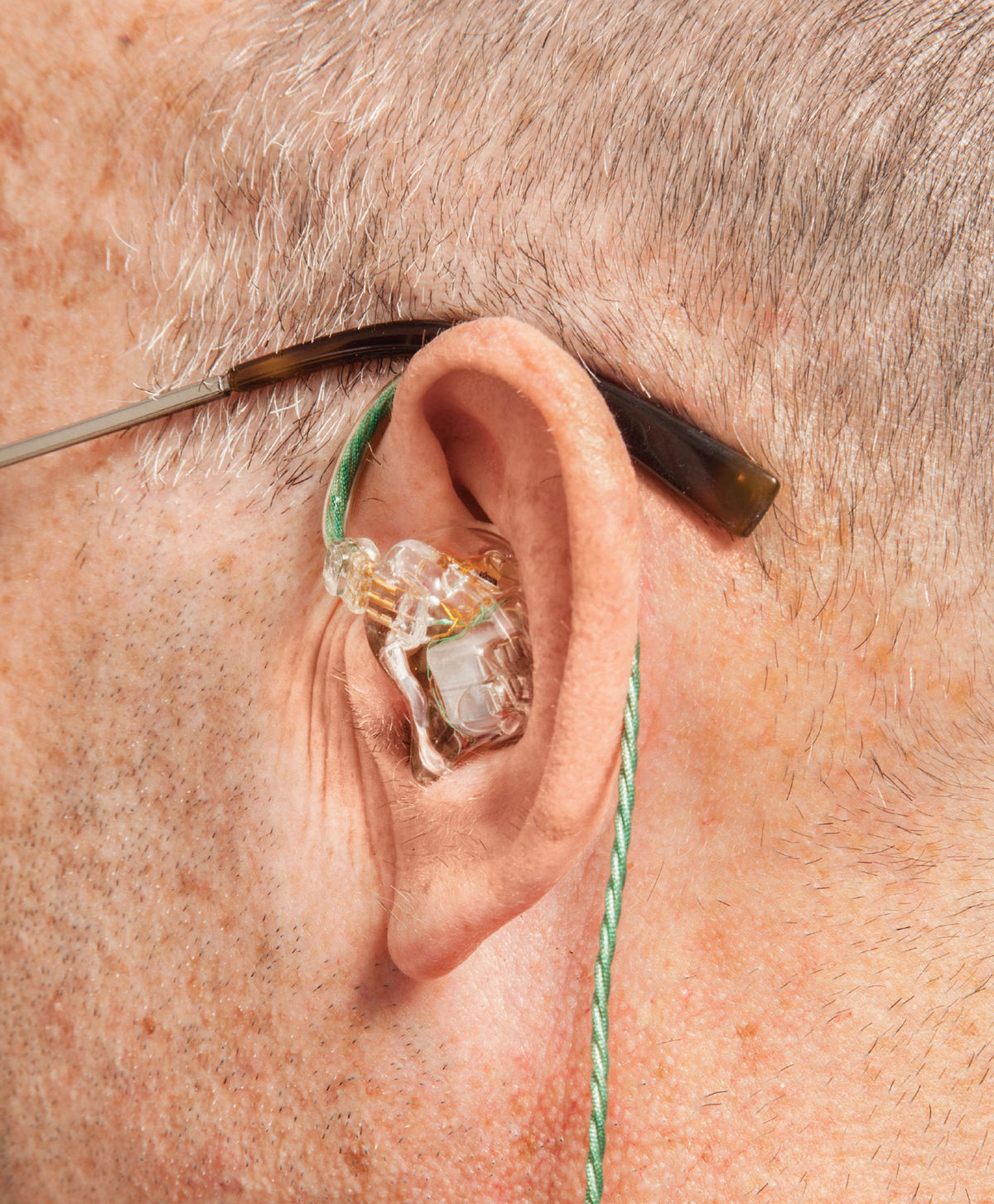Expanding capabilities: Bluetooth headset competes with a $ 3000 hearing aid
 Composer Richard Einhorn in June 2010 woke up deaf. He went to an audiologist and bought a hearing aid for $ 3,000, which was not included in his insurance. Since then, Einhorn is looking for alternative gadgets that help to hear, but are cheaper.
Composer Richard Einhorn in June 2010 woke up deaf. He went to an audiologist and bought a hearing aid for $ 3,000, which was not included in his insurance. Since then, Einhorn is looking for alternative gadgets that help to hear, but are cheaper.Now the composer has a whole backpack of such devices. He prefers a headset for $ 350 from Sound World Solutions. With this headset, he talks the phone, listens to music and the environment. Another device for $ 500 was made to order by Ultimate Ears - it needs a composer to work with music. In restaurants and theaters, Einhorn uses a $ 45 directional microphone and a $ 5 application to remove background noise. For especially loud places, the composer reserved a set of microphones for $ 700, which can be fixed on the interlocutors
US regulators do not include bluetooth headsets as hearing aids, but classifies them as individual sound amplifiers. Over the past year and a half, advances in circuit design and energy efficiency have helped manufacturers reach a new level in the creation of hearing devices, while maintaining affordable prices. Headset manufacturers want to enter the hearing aid market, which is estimated at $ 6 billion. Many will continue to pay for conventional hearing aids, but people will have an inexpensive alternative.

Why are individual sound reinforcement devices cheaper than hearing aids?
The main reason is that they are not regulated by law as medical devices. Calibration and adjustment of devices make up the bulk of the cost of the devices from the largest manufacturers - Siemens, Sonova, Starkey Hearing Technologies, William Demant, GN ReSound and Widex. The production of a hearing aid for $ 4,400 is ten times cheaper than the cost to the consumer. Device manufacturers are working on proprietary signal processing and information transfer technologies - and this affects prices.
')
What problems stand in the way of bluetooth manufacturers in the new market?
The set is not in the offices of doctors. The doctor is unlikely to offer a person with hearing problems a bluetooth headset for $ 350, but he will gladly sell a hearing aid for $ 4,000. The average age of an American buying such a device is 71 years, and this complicates the search for customers.
Sales in the United States are affected by legislation governing the hearing aid market since 1977. Manufacturers of personal sound amplification devices should not deceive users by telling them that these are hearing aids. For example, Etymotic has to say “Not a hearing aid, but it has many advantages.”
 Etymotic Bean costs $ 300. In fact, this device uses the technology of 1988, but only in 2013 the scheme was cheap enough for mass production. The manufacturer uses the same technology in headphones for musicians in orchestras and foot soldiers in the army.
Etymotic Bean costs $ 300. In fact, this device uses the technology of 1988, but only in 2013 the scheme was cheap enough for mass production. The manufacturer uses the same technology in headphones for musicians in orchestras and foot soldiers in the army.The goal of device manufacturers is to place their headsets in clinics next to Starkey, ReSound and Siemens, thereby giving people a real and cheaper alternative to hearing aids. Expanding opportunities.
Source: https://habr.com/ru/post/374743/
All Articles